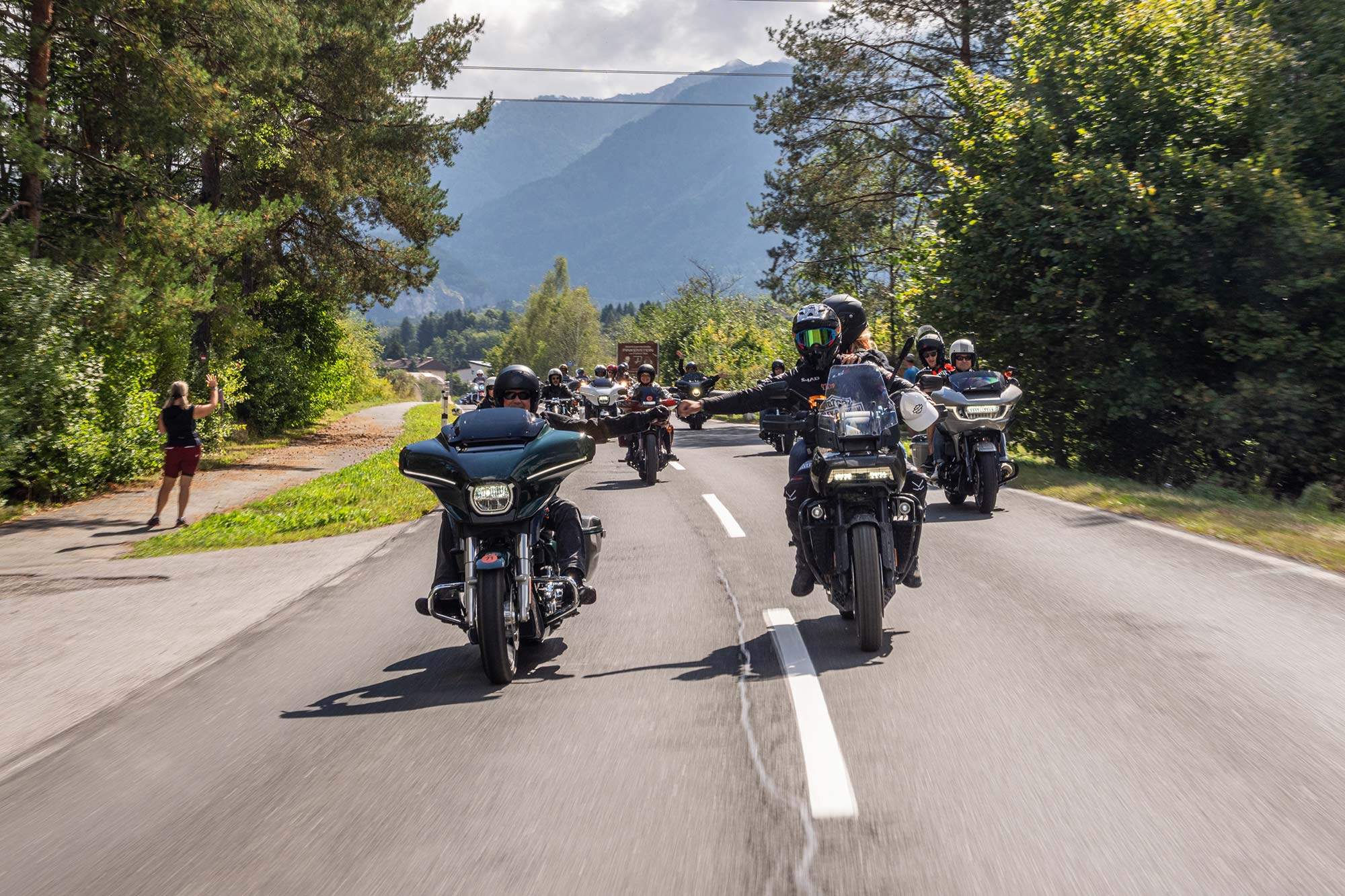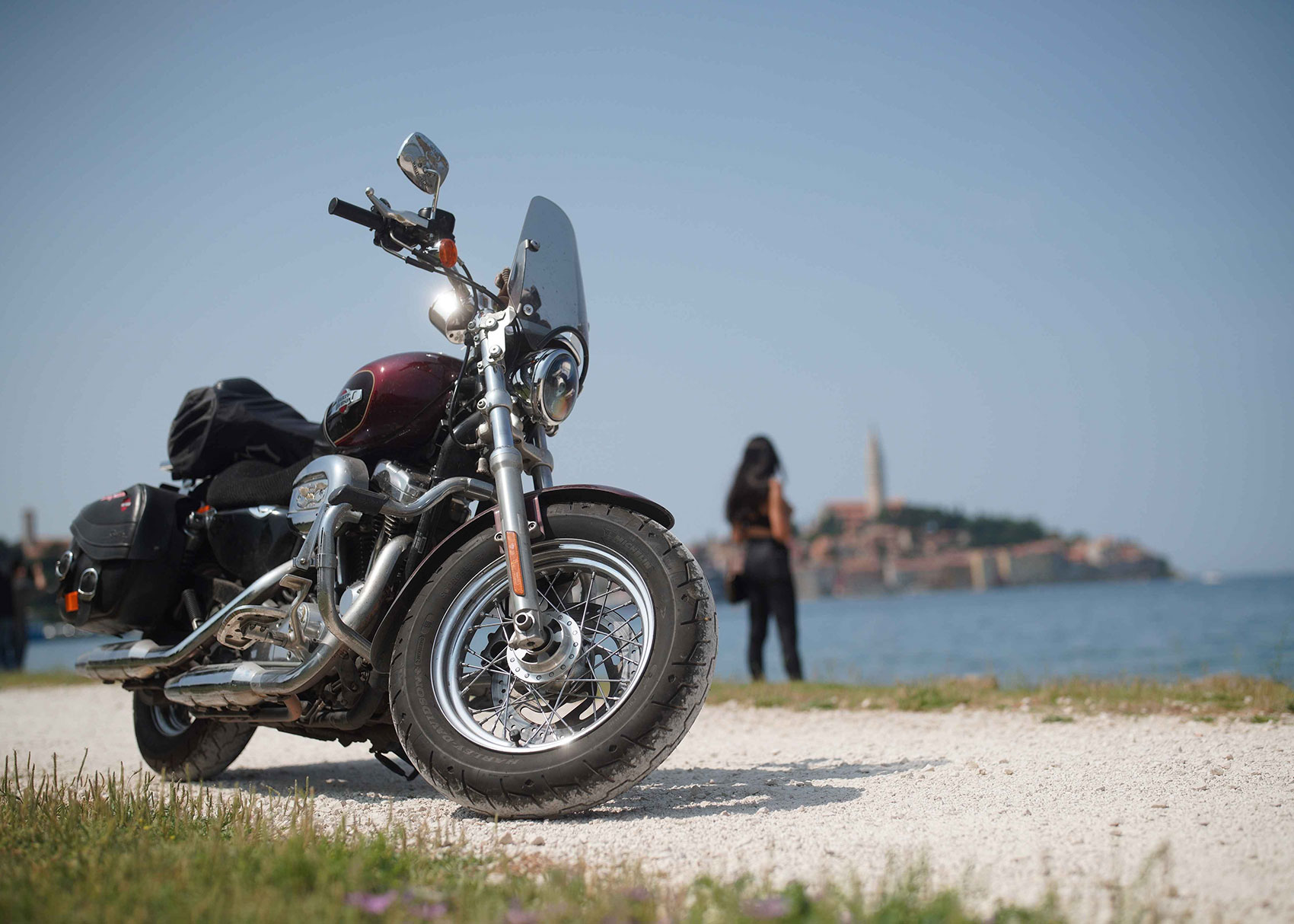
A HISTORY IN 12 ENGINES
The history of Harley-Davidson power has followed many twists and turns, from single cylinder to v-twin, from air cooled to liquid cooled to electric. Here we take a look at the most iconic engines that have featured in the history of Harley-Davidson – and those that will power the company forward for the next generation of riders.
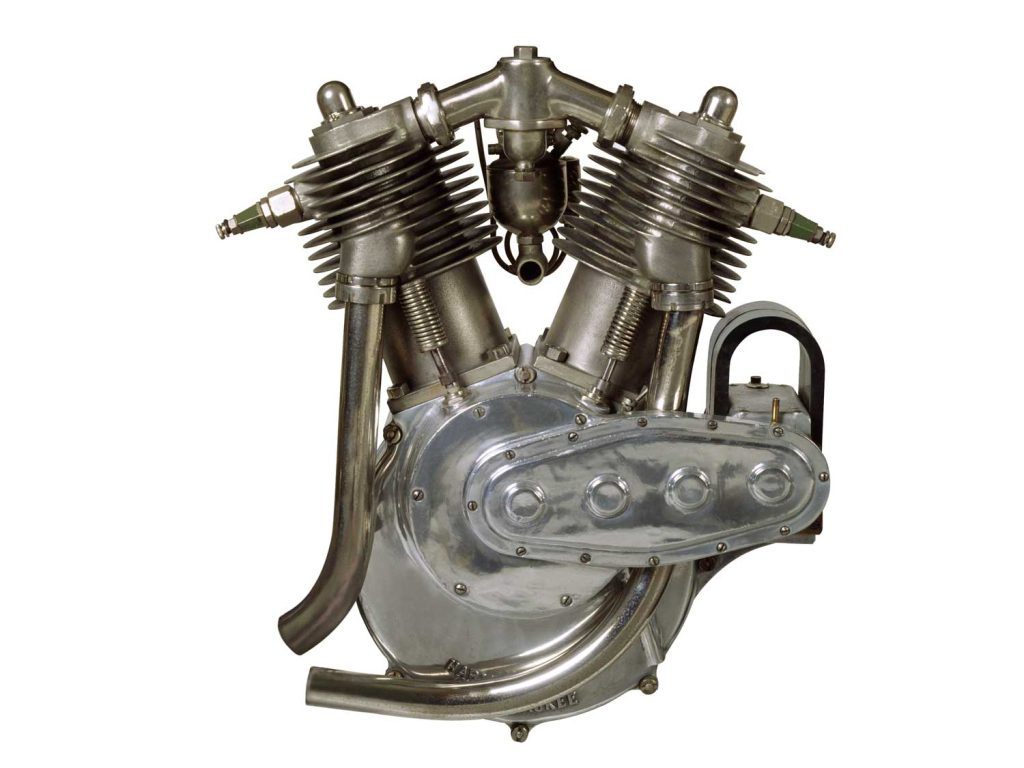
ATMOSPHERIC: 1909
The Atmospheric V-twin was offered in 1909 when Harley-Davidson was just six years old. The engine produced 7hp from 49.5cu-in and was fitted to the small number of motorcycles built for the 1909 model year. Atmospheric engines can be identified by a lack of pushrods.
Significance: Helped Harley-Davidson to achieve the first steps to becoming a major player in the motorcycle market.

F-HEAD: 1911-1929
The F-Head engine was introduced in 1911 in the Model 7D, and the simple but powerful v-twin motor went on to form the power source for Harley-Davidson bikes until 1929.
The major innovation was a mechanically operated overhead inlet valve, activated by a single external pushrod, allowing engine revs and power to be increased substantially from earlier models. Available initially in 61cu-in displacement and, later, 74cu-in, by 1929 the F-Head was achieving 24hp – advanced for motorcycle engines of the time.
Significance: The first in a long line of ‘big’ v-twin power plants that would set the stage for more than 100 years of Harley-Davidson motors to come.
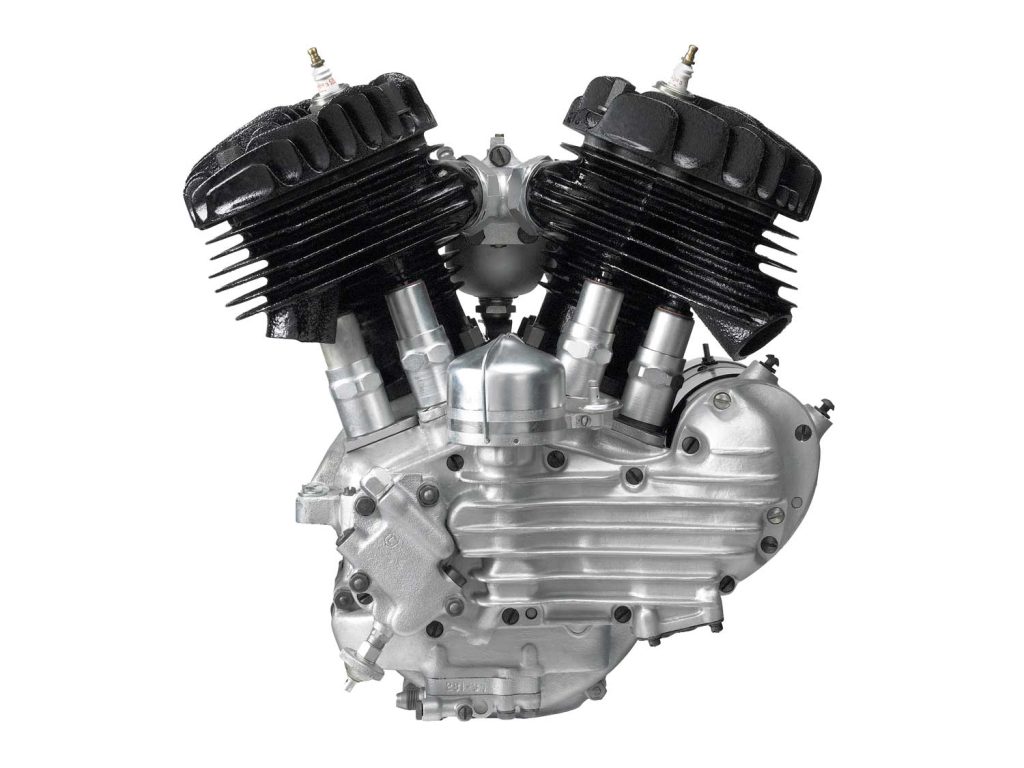
FLATHEAD 45: 1929-1973
A simple, robust and reliable side-valve engine, the Flathead is named after its flat, curved cylinder heads and is also known as the ‘45’ after the capacity in cubic inches.
Flathead engines were popular because their simple design, with valves inverted inside the cylinder instead of the head, offered easier repairs and servicing than overhead valve designs.
World War Two saw nearly 70,000 Flathead engines in service in the WLA and WLC models produced for military use, many of which found their way into civilian hands after the war ended.
Significance: The Flathead has the longest lifespan of any engine in Harley-Davidson history, used until 1952 in solo models and until 1973 in the three-wheeled Servi-Car – a real testament to the power and reliability of the design.
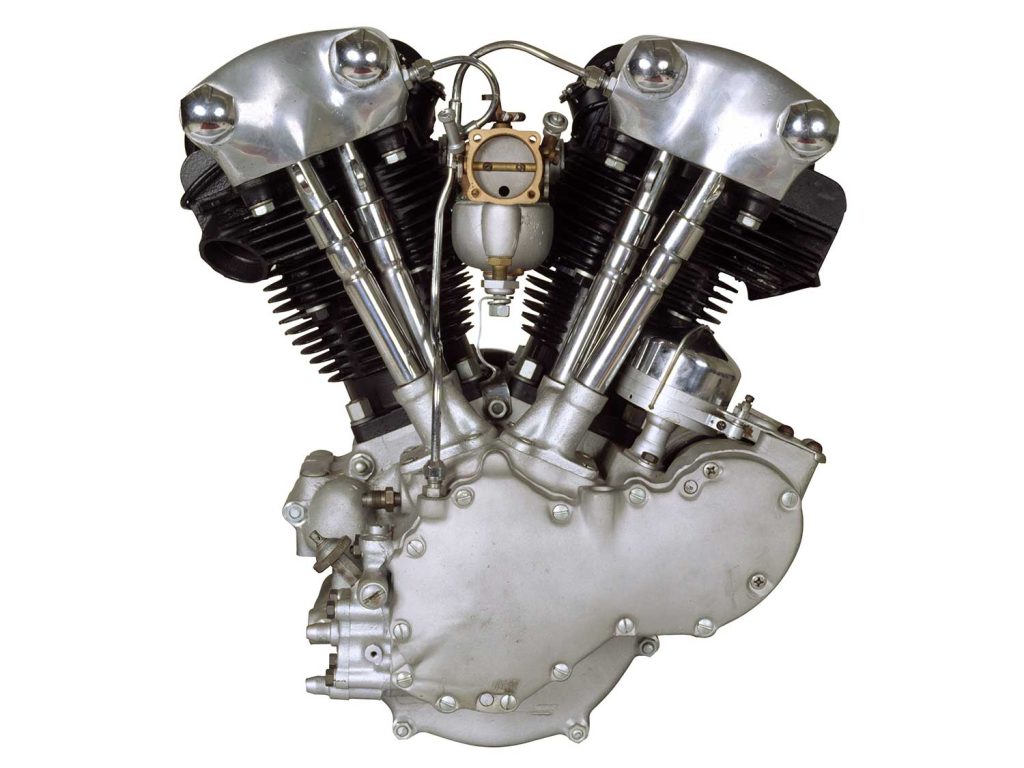
KNUCKLEHEAD: 1936-1947
Named after the distinctive ‘clenched fist’ appearance of the rocker covers, the Knucklehead or ‘EL’ was produced in 61cu-in and, by 1941, in 74cu-in versions generating 40 and 45hp respectively. The first non-racing Harley-Davidson v-twin engine with overhead valves and a recirculating oil system, the Knucklehead is still considered by many to be the best-looking Harley-Davidson engine ever produced and contemporary collector value reflects this.
Significance: Seen as the progenitor of Harley-Davidson Big Twin engines, its design cues are recognisable to this day.
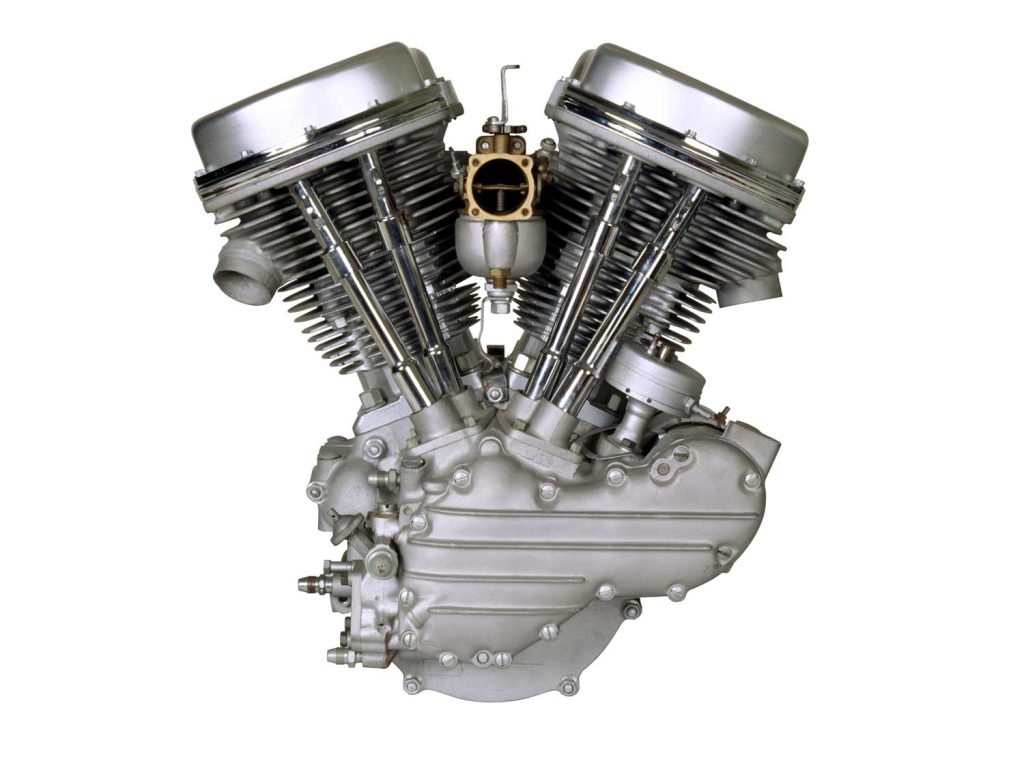
PANHEAD: 1948-1965
The Panhead motor is famously named after the distinctive cake-pan-shaped rocker covers. Developments accelerated by World War Two included internal oil lines, hydraulic valve lifters and new aluminium cylinder heads, meaning the ‘Pan’ was more reliable, stronger and lighter than its Knucklehead predecessor and required less maintenance. By the 1966 model year, when its successor the Shovelhead first appeared, it was producing 60hp and could even be ordered with an electric start.
Significance: New technology, including aluminium heads and hydraulic lifters, was a significant game-changer for Harley-Davidson.
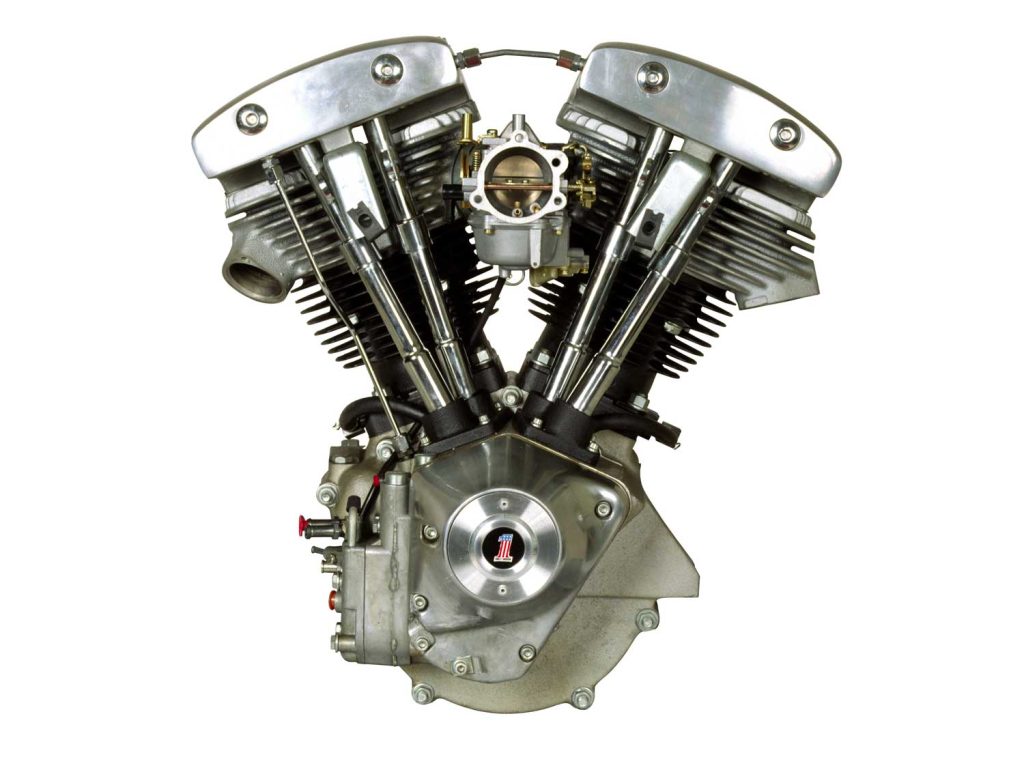
SHOVELHEAD: 1966-1984
Powering Harley-Davidson through the AMF era, the 74cu-in – and later 80cu-in – Shovelhead engine saw new higher compression cylinder heads and a new camshaft – necessary developments to produce more power to counter the increased weight and sophistication of the mid-’60s Harley-Davidson models. The naming convention continued to be based on the rocker covers, now with a distinctive shovel shape.
Significance: More power and a striking appearance meant the ‘Shovel’ carried Harley-Davidson through the difficult AMF years.
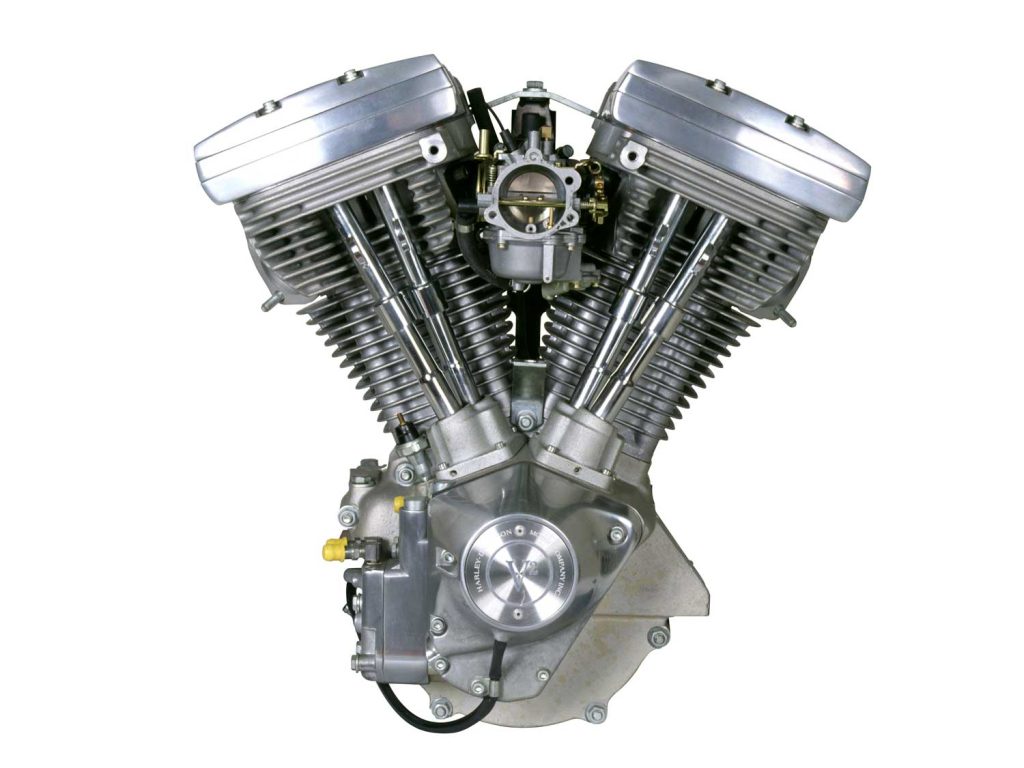
EVOLUTION: 1984-1999
The Evolution® engine, seven years in development, used an all-aluminium architecture to give more power, less vibration and quieter running than its Shovelhead predecessor; it also used significantly less fuel. These benefits came from technological innovations including redesigned pistons, valve gear and combustion chambers; computerised ignition; and a redesigned oil system, which meant the Evo was more reliable and virtually oil-tight.
Significance: The all-aluminium ‘Evo’ engine was a quantum leap in design and reliability for Harley-Davidson and is widely credited with the company’s success following independence from AMF.

TWIN CAM: 1999-2016
The Twin Cam® 88 motor was launched to replace the Evolution for the 1999 model year and was named for the two chain-driven cams powering the valve system. Delivering more power and torque than the Evolution, the Twin Cam was available as 88cu-in, rising in later years to 103 and then 110cu-in. The ‘TC88’ was first introduced into the Touring and Dyna® ranges and then a counter-balanced version a year later for the solid-mount Softail models.
Significance: A completely new engine design – while keeping the engine aesthetically similar to the hugely successful Evolution engine.
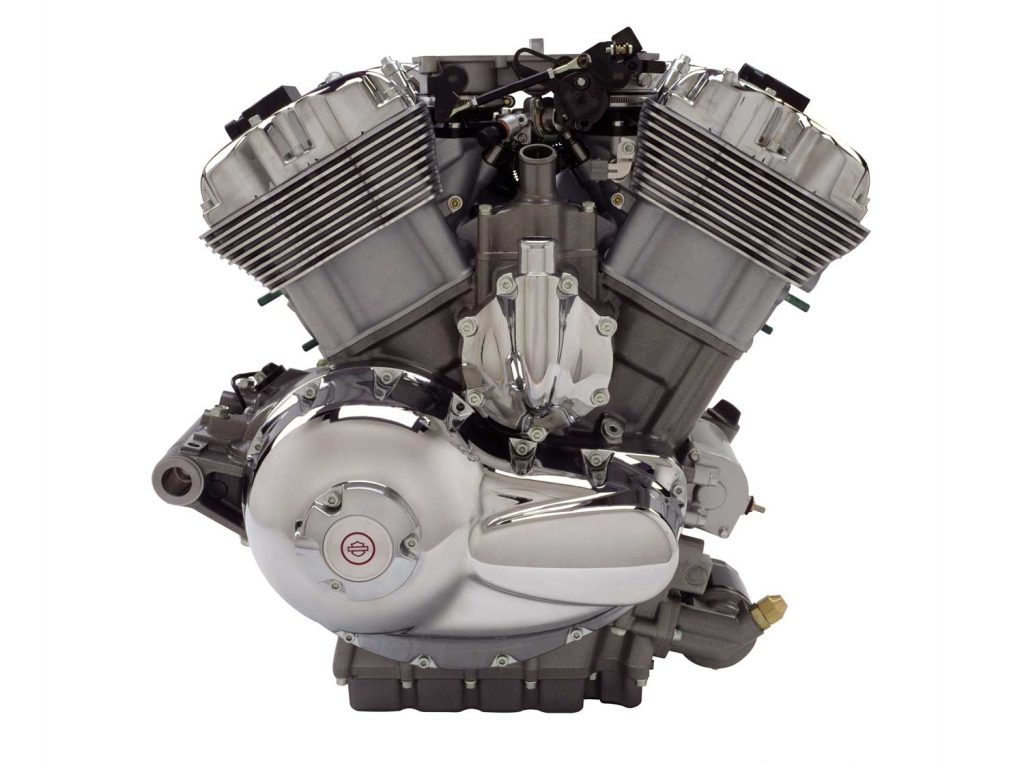
REVOLUTION: 2001-2017
The Revolution® engine was introduced to an astonished public in the V-Rod® model in 2001. Loosely based on the VR1000 racing engine, the Revolution featured a 69cu-in 60-degree configuration, internally counterbalanced and with double overhead cams and four-valve heads – and liquid cooling. Larger-capacity versions soon followed, culminating in the 1,300cc 165hp VRXSE Destroyer™, an off-the-shelf drag-racing motorcycle.
Significance: The first production high-power, liquid-cooled Harley-Davidson engine brought new customers to the brand.
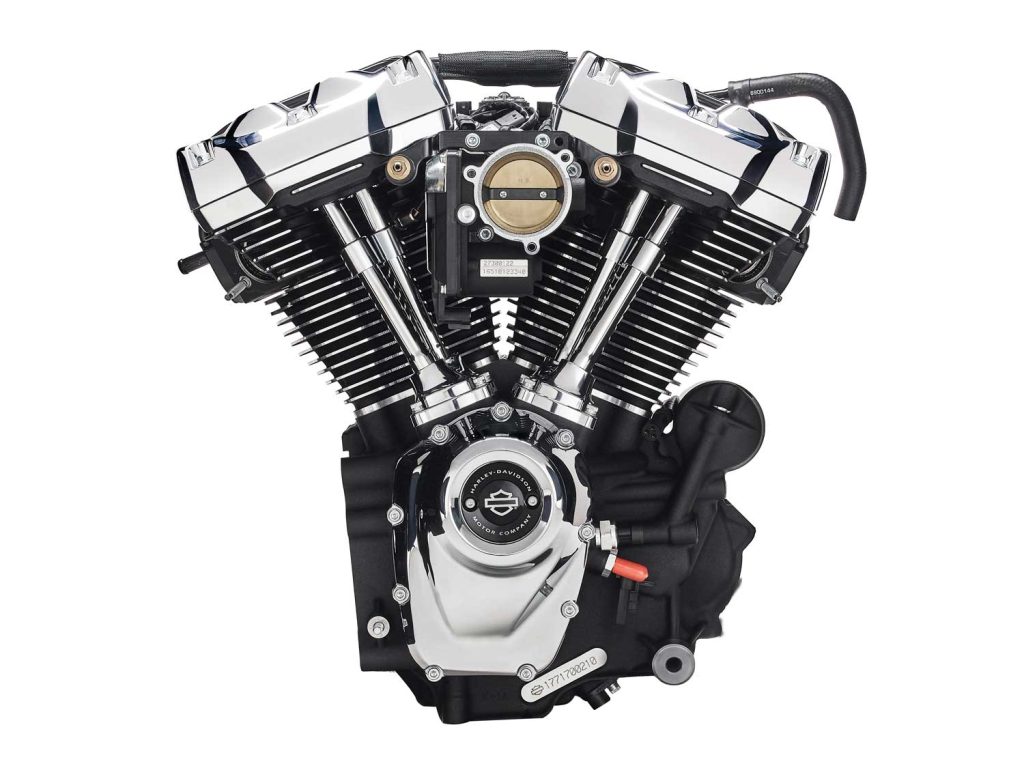
MILWAUKEE-EIGHT: 2017
The Milwaukee-Eight® engine is the logical extension of the 45-degree v-twin design that has become synonymous with Harley-Davidson, but with four-valve twin-plug heads, internal counterbalancers and a single chain-driven camshaft, making it more powerful, lighter, quieter and more efficient than the Twin Cam it replaces. Available in 107, 114 and 117cu-in configurations.
Significance: The logical conclusion of the traditional 45-degree air-cooled v-twin engine configuration.
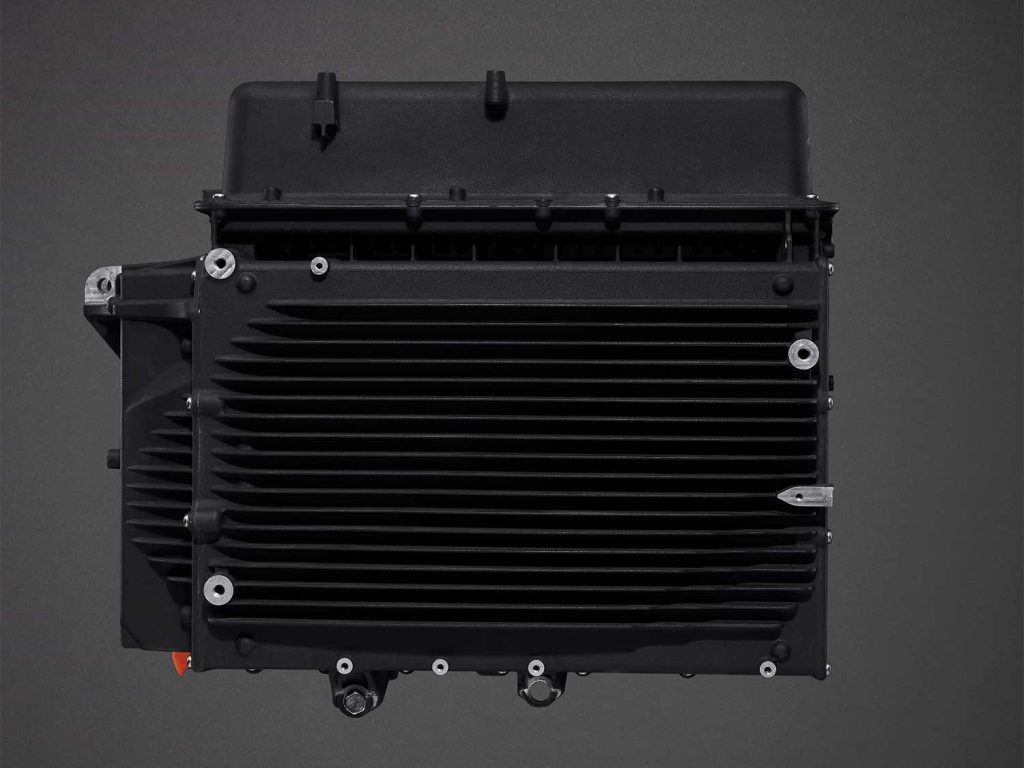
LIVEWIRE: 2020
Representing the most radical departure in the Motor Company’s history, the power plant of the LiveWire® – first displayed to the media in 2014 and launched in a production bike for the 2020 model year – is a liquid-cooled, three-phase induction electric motor generating 105hp. A bold step into the future for Harley-Davidson.
Significance: The first electric power plant to be launched by a major motorcycle manufacturer.
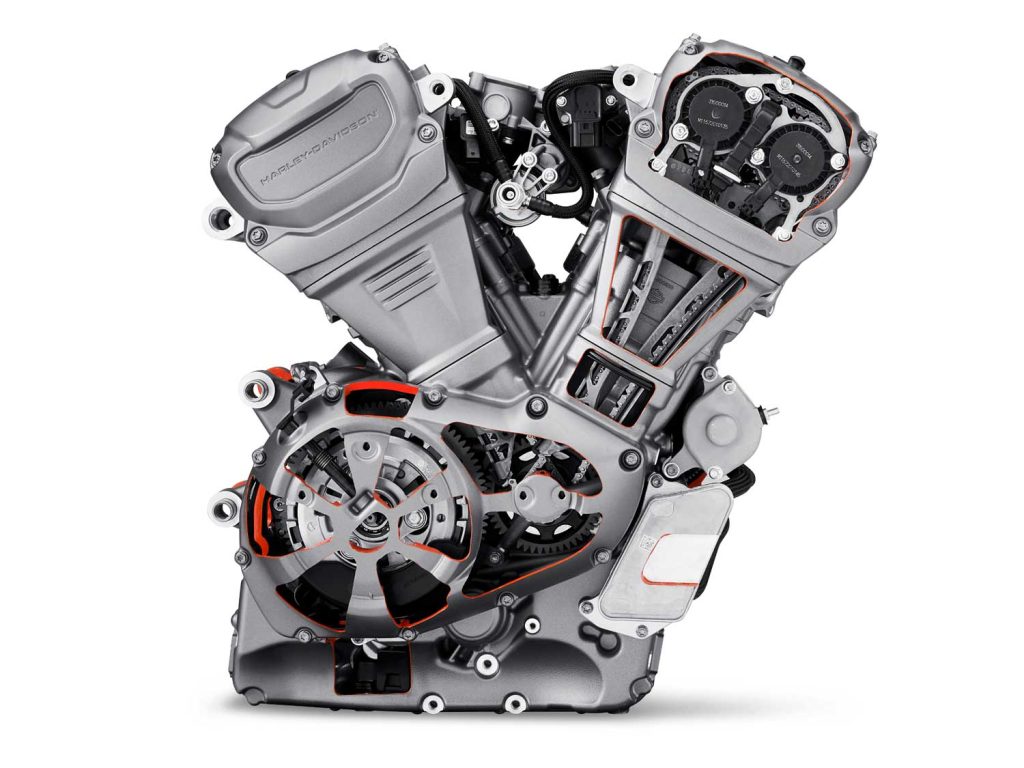
REVOLUTION MAX: 2021
Making its debut in 2021 in the Pan America™ 1250 and 1250 Special, the Revolution Max® is a completely new high-performance 60-degree DOHC v-twin engine designed to power the next generation of Harley-Davidson bikes. Liquid cooled with four cams, downdraft throttle bodies and six-speed transmission, the Revolution Max embraces technological innovation while paying homage to the heritage of the brand, right back to that first Atmospheric V-Twin in 1909.
Significance: The high-tech motor powering Harley-Davidson motorcycles for the foreseeable future.
HONOURABLE MENTIONS
There are of course many other notable engines, including the early single cylinder (1903-1909), K Model (1952-1956),Sportster Ironhead (1957-1985) and XR750 (1970-1985).
Tags:
Read more tales from the Harley Owners Group!
Croatian Sunshine
The 31st European H.O.G. Rally returned to celebrate under blue skies in Medulin from 12-15 June 2025
In the pink
Creative imaginations were let loose on a spectrum of Harley models, with the top entries showcased along the marina
